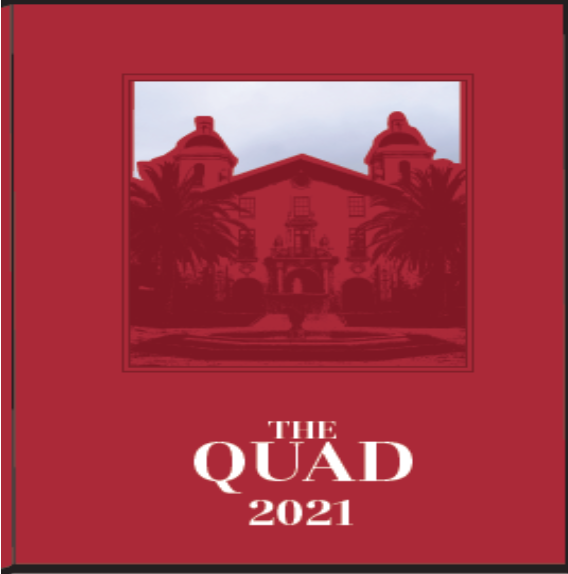
By Op-Ed
On Thursday, the Faculty Senate debated three proposals to change how grading will work during spring quarter. The three options were:
- Option 1: Universal Satisfactory/No Credit (S/NC) for all courses
- Option 2: Students can choose between letter and Credit/No Credit (CR/NC) for each course they take
- Option 3: A+/A/NC for all courses
If none of the options passed, there would be no change to grading for spring quarter. The Faculty Senate ultimately chose Option 1.
Options 1 and 2 were introduced by the Academic Continuity Group, which Stanford convened to assess and propose the best way to maintain the education mission of Stanford during the COVID-19 pandemic, while Option 3 was introduced by the ASSU. We formulated Option 3 because we felt that it was necessary to have a policy on the table that honored the two biggest priorities we were hearing from students: a concern for preserving equity and a concern for maintaining GPA and transcript competitiveness for postgraduate opportunities.
How did the ASSU solicit and incorporate student feedback?
To gather student feedback, we sent out an email to all undergraduate and graduate students on Wednesday, a day before the Faculty Senate meeting. The email outlined the pros and cons of the two proposals from the Academic Continuity Group (Options 1 and 2). We also included pros and cons of Option 3, the ASSU’s own proposal. In response to student feedback, we modified our original proposal before presenting it to the Faculty Senate by adding an A+ option to accommodate those with a GPA above 4.0. We did not offer a rank-choice vote between the different options, which was an error on our part. Thus, we received a count of respondents’ preferred first choice, but not their second choice. Still, we found that the numerical data and anecdotes revealed important information about student preference and student need. We deeply appreciate the time that students took to share their perspectives, and we took their comments very seriously.
We received 1,545 responses to our survey from a wide range of undergraduate and graduate students, and there was overwhelming support for an A/NC system (the initial proposal later amended to A+/A/NC), with 66% of the vote. Second was Option 2, with 25%, and third was Option 1, with 9%. You can find the slides we used for our presentation with our breakdowns of the data here. We asked students to select all factors that would compromise academic performance (such as food insecurity or lack of reliable internet access) that apply to them. When we dug deeper into the numbers, we saw a disproportionate amount of support for Options 1 and 3 coming from students facing the most difficulties as a result of the COVID-19 crisis. Students in support of Option 2 had, on average, two mitigating factors. For Options 1 and 3, the mean number of barriers reported were about three and 3.5 respectively. Additionally, we found that students who advocated for Option 2 were 4.3x as likely to not be facing any barriers to learning as compared to those who advocated for the A/NC proposal. We interpreted this to mean that choosing between a letter grade and CR/NC was not a desirable option for some of our most vulnerable student populations, who would likely be forced to take their courses CR/NC. Through the data and personal anecdotes, we saw that the portion of students who preferred Option 2 because it allowed them to improve their GPA was disproportionately composed of individuals who reported experiencing no barriers to learning. We ultimately decided we would fight for Option 3 because it had received the strongest and widest support from the student body.
What is the Faculty Senate and how did it reach this decision?
We understand that for many students, this may have been the first time that they have interacted with or even heard about the Faculty Senate. Information about the Faculty Senate’s purpose, membership and rules can be found on this website. While the Faculty Senate is composed of 56 voting faculty members, there are reserved spots for senior-level University administrators such as the president and provost, in addition to spots for the following elected representatives of the ASSU: the two executives, one representative from both the Undergraduate Senate and Graduate Student Council and one student at large. However, we want to make clear that these ASSU representatives are not considered full members; therefore, these students are allowed to speak on the floor, but are unable to vote or personally bring forward motions or amendments to legislation. Instead, the ASSU is able to introduce motions to the Faculty Senate that have been passed by the ASSU legislative bodies. With this in mind, we worked with the Undergraduate Senate to pass a formal resolution in favor of Option 3 so that it could be discussed on the Senate floor.
For approximately four hours on Thursday afternoon, the Faculty Senate discussed the benefits and shortcomings of each proposal over Zoom, with the conversations mainly focused around equity and student agency. This same debate is currently happening at universities across the country — it was only a matter of time before our own Faculty Senate would wrestle with this dilemma. As the only students allowed to speak on the floor of the Senate, we frequently spoke up to voice student concerns with the first two proposals, as neither one fully addressed our concerns surrounding both equity and GPA. While there were a few attempts to amend our policy to make it more palatable to many faculty and students alike, the Faculty Senate ended up voting 36-15 in favor of Option 1: Universal Satisfactory/No Credit. In opposing Option 3, faculty primarily expressed concerns about the fairness and implications of giving an “A” to work that had actually earned a B or C. Some faculty suggested that were Option 3 to pass, professors might still only give As to A-level work, which would make it even more difficult for students to pass.
How do you as student representatives feel about the Faculty Senate’s decision?
First of all, we share many students’ disappointment that our motion for A+/A/NC did not pass. We understand that equity and letter grading are both very important to students, and that an ideal spring quarter grading scheme would include both. We understand students’ frustration that the Faculty Senate made a decision that did not reflect the most preferred choice of an overwhelming majority of students, despite hearing our presentation on student feedback. As representatives of the student voice, we worked hard to bring students’ perspectives into yesterday’s debate. We are truly sorry that many students feel that their voices went unheeded.
However, we want to be clear that we still believe the Faculty Senate’s decision to choose a Universal S/NC policy was the best possible choice out of the two remaining flawed options. We believe that Option 2 is fundamentally inequitable. In our view, the “choice” between letter grading and C/NC under Option 2 is in fact a false choice for many members of our community who are (or will be) heavily impacted by the COVID-19 crisis. We are not just talking about a small handful of students. Over the last week, we at the ASSU have received hundreds of personal testimonials from undergraduate and graduate students alike who, simply put, have no chance of having a “normal” spring quarter. Students do not have safe places to do schoolwork, must spend hours each day caring for sick or immunocompromised loved ones and lack access to adequate or accessible learning technology, among other serious challenges. Furthermore, as the severity of the COVID-19 crisis increases over the course of the quarter, more and more people will be impacted, and it is likely that a significant number of instructors, teaching assistants and students will become sick, making it impossible to address things on a case-by-case basis. We wish we could agree with those who have instead argued for addressing the root causes of students’ struggles in this unprecedented global crisis. But no matter how hard Stanford tries — and to its credit, the University is trying — this institution will never be able to provide enough financial aid and other resources to mitigate the massive inequities being created by this pandemic.
For this reason, any policy that is optional will inevitably end up disproportionately benefiting students who are experiencing relative privilege during spring quarter. These students will be able to improve their GPAs and transcripts while their less fortunate peers will be forced to opt for CR/NC, which would then place them at a relative, and unfair, disadvantage to other Stanford students. Moreover, Option 2 does not guarantee that all departments would accept non-letter grades for their major or minor requirements, while Option 1 requires full departmental cooperation to be viable. The only way to meaningfully ensure any kind of equity in grading is with a universal and mandatory policy, which is why we still support Universal S/NC over Optional CR/NC if the choice is between these two options.
For students who are concerned about their GPAs, the tuition expense of a quarter at Stanford and/or postgraduate admissions: Your concerns are incredibly valid, and we hear them. As we stated above, this policy is still a flawed one, and it will still cause pain. However, Universal S/NC will not result in anyone’s GPA decreasing, and it ensures that students will not have unfair GPA gains at their classmates’ expense. Moreover, peer institutions like Dartmouth, Columbia and MIT have all adopted a similar grading policy for their spring terms, while professional schools such as Harvard Medical School have already stated that students will not be penalized for having S/NC classes on their spring quarter transcripts. While we understand that this outcome may not be ideal for your personal situation, we ask you to please think about the ways in which our community at large has been and will increasingly be affected by COVID-19. This policy requires many of us to make personal sacrifices, but it does so in order to protect some of the most vulnerable members of our community. Thus, while we are disappointed by the Faculty Senate’s decision to reject our proposal, we believe that it chose the more equitable option out of the remaining two.
As we all prepare for this unusual spring quarter, we hope all of you are staying safe, taking care of yourselves and each other, and finding hope during this time of crisis. We at the ASSU are committed to serving you, and we will do everything in our power to help our community weather this storm together.
Sincerely,
Erica Scott ’20, ASSU President (she/her)
Isaiah Drummond ’20, ASSU Vice President (he/him)
Remy Gordon ’20, ASSU Executive Chief of Staff (he/him)
Jonathan Lipman ’21, ASSU Undergraduate Senator and Faculty Senate rep. (he/him)
Latifah Hamzah, Ph.D. candidate, student-at-large representation to the Faculty Senate (they/them)
Micheal Brown ’22, ASSU Undergraduate Senator (he/him)
Munira Alimire ’22, ASSU Undergraduate Senate Chair, (any/all)
Jeffrey Rodriguez ’20, ASSU Director of FLI Community Outreach (he/him)
The Daily is committed to publishing a diversity of op-eds and letters to the editor. We’d love to hear your thoughts. Email letters to the editor to [email protected] and op-ed submissions to [email protected].





